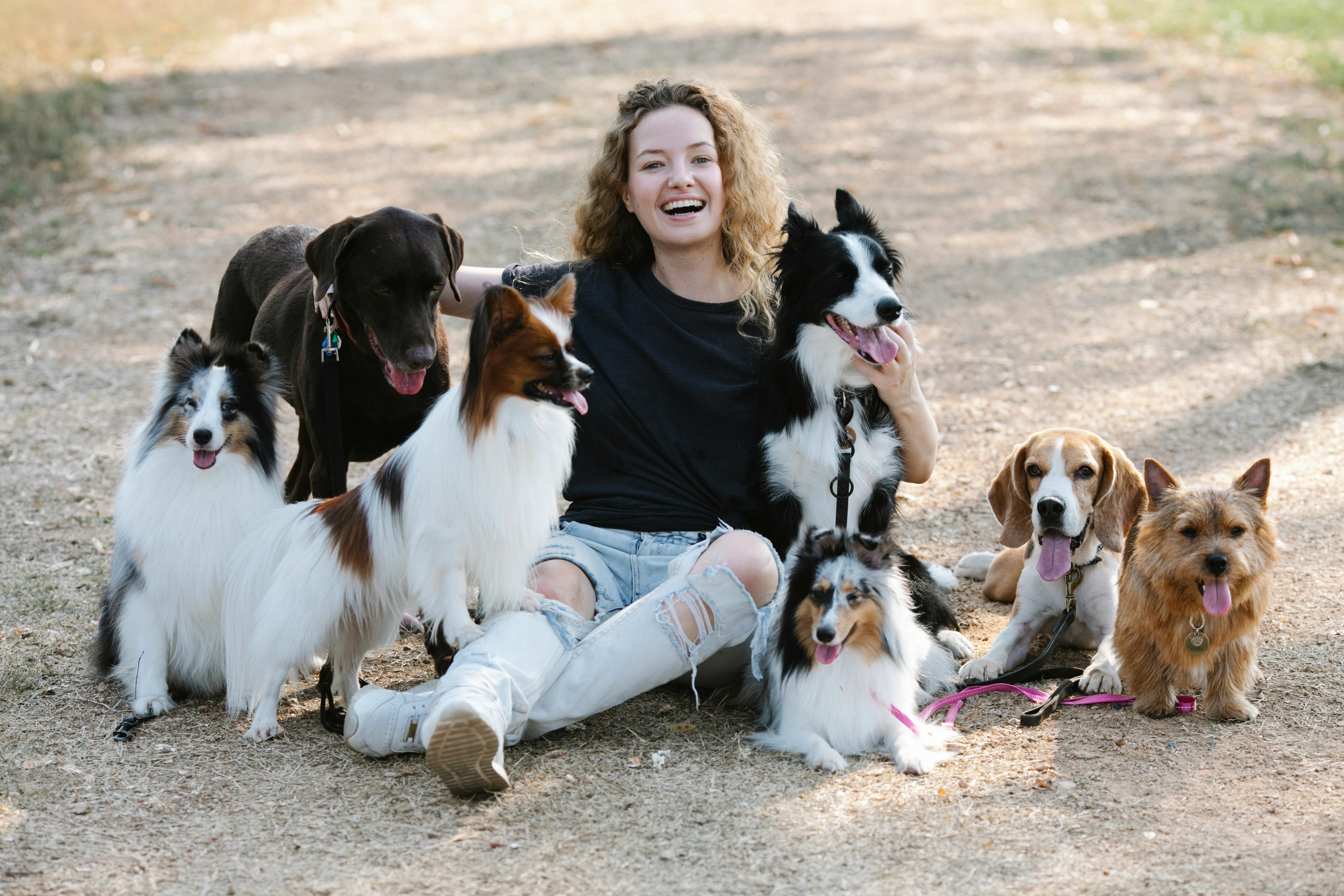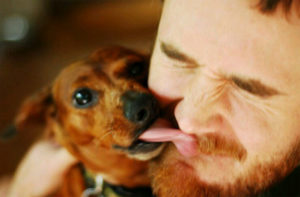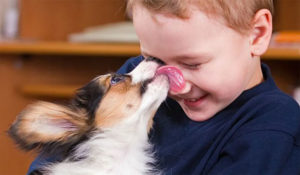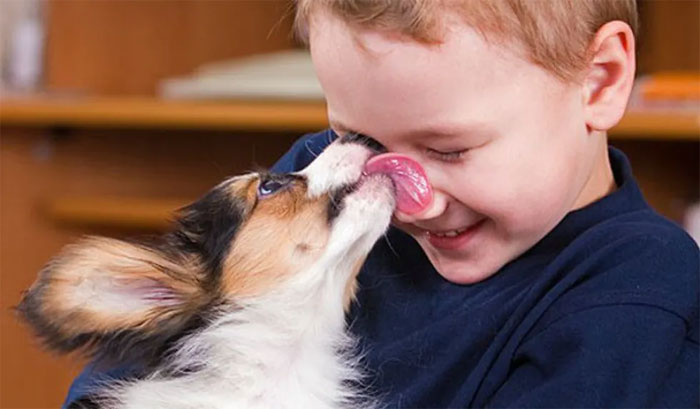
The Evolutionary Origins of Dog Face Licking
To understand why dogs engage in face licking, it’s essential to delve into their evolutionary history. The behavior of licking faces has its roots in the wolf puppy behavior of licking the mouths of adult dogs. This action stimulates the regurgitation of partially digested food, which helps puppies transition from suckling their mother’s milk to consuming solid food. Thus, face licking has become a social behavior ingrained in canine DNA.
Social Communication and Affection
Licking another dog’s face or a human’s face is a normal social behavior for dogs. It serves as an appeasement gesture, indicating their social deference. Dogs may also lick faces to solicit food, seek more social information, express affection, or simply to gain attention. Additionally, face licking can serve as a form of grooming, where dogs may lick their housemates’ faces and extend this behavior to their human owners.
Face Licking as a Sign of Affection
When your dog showers you with slobbery kisses, it’s often interpreted as a sign of affection. Dogs are pack animals and have a deep bond with their human companions. Licking your face can be their way of expressing love and devotion. It’s their attempt to connect with you and strengthen the emotional bond you share.
Face Licking and Grooming Behavior

Grooming is an integral part of a dog’s routine, and face licking is no exception. Dogs may lick their own faces to clean themselves, and they may extend this behavior to lick their owners’ faces and other body parts. If your dog cannot reach your face, they may settle for licking your hand, arm, or leg. In certain cases, this grooming behavior can be seen as a display of affection.
Face Licking and Social Deference
Sometimes, dogs may try to lick the face of a complete stranger. In such instances, it could be an attempt to appease the stranger and ensure they pose no harm or threat. When dogs lick the faces of children, it can be a sign of affection, appeasement, or simply an act of cleaning food residue off their faces. It’s important to understand that dogs use face licking as a way to communicate and navigate their social interactions.
The Health Risks Associated with Dog Face Licking
For healthy children and adults, dog saliva poses minimal health risks when it comes into contact with intact skin. However, it is not advisable to allow your dog to lick an open wound on your skin. Their saliva can keep the wound moist and open, creating an environment for bacteria to thrive and potentially leading to a skin infection.
In rare cases, certain bacteria present in a dog’s saliva can cause illness in individuals with compromised immune systems. The bacteria Capnocytophaga canimorsus, found in both dogs and cats, can enter the skin through open wounds, such as bites or cuts. While these cases are uncommon, it’s best practice to wash your hands after petting any dog to minimize any potential risks.
Should You Allow Your Dog to Lick You?
For most healthy individuals, allowing your dog to lick your face or other body parts poses minimal health risks. However, if you have concerns, it’s best to refrain from letting dogs lick your mouth or any open skin wounds. You can redirect their affectionate behavior to more acceptable forms, reinforcing positive interactions without encouraging face licking.
If you do allow your dog to lick you, it’s advisable to take precautions. For instance, offering the underside of your chin for them to lick and promptly washing your face afterwards or using an antibacterial sanitizing spray or gel. Alternatively, allowing them to lick your hand and following up with hand washing or using an antibacterial spray or gel can help maintain cleanliness.
Managing Unwanted Face Licking Behavior

If you’re not a fan of dog face licking, it’s important to address the behavior appropriately. It’s essential to note that you may unintentionally reinforce the licking behavior by giving your dog attention every time they lick your face. Similarly, if your dog licks your face or mouth while you’re eating and you reward them with food, you are inadvertently encouraging the behavior to continue.
To discourage face licking, redirect your dog’s affection and attention to more acceptable behaviors. For example, teach them commands like “sit,” “stay,” or “shake hands” and reward them with praise or treats when they exhibit these behaviors instead. Consistency and positive reinforcement are key to shaping your dog’s behavior and creating a stronger bond between you.
Conclusion
Dog face licking is a common behavior that has evolved from their ancestral roots. It serves as a form of communication, social deference, grooming, and affection for dogs. While it poses minimal health risks for healthy individuals, precautions should be taken to avoid any potential infections, especially in those with compromised immune systems. Ultimately, whether or not you allow your dog to lick your face is a personal choice, but redirecting their affection and reinforcing positive behaviors can help manage unwanted face licking. So, embrace those slobbery kisses or gently redirect your dog’s affection to maintain a healthy and loving relationship with your furry friend.
Additional Information: It’s worth noting that dogs use multiple forms of communication to express their emotions and needs. Licking is just one of the ways they convey affection and establish social bonds. Understanding the broader context of their body language, vocalizations, and other behaviors can help you better connect with your canine companion.
